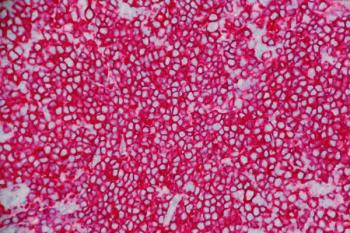
ENESTop 192-Week Study: Approach to Shortening Treatment for CML Starts from Beginning
Jorge Eduardo Cortes, MD, Deputy Chair and Professor of Medicine in the Department of Leukemia at MD Anderson Cancer Center in Houston, Texas, references the ENESTop 192-week study results in which treatment-free remission was achieved in patients with chronic myeloid leukemia in chronic phase after stopping second-line nilotinib.
Jorge Eduardo Cortes, MD, Deputy Chair and Professor of Medicine in the Department of Leukemia at MD Anderson Cancer Center in Houston, Texas, references the ENESTop 192-week study results in which treatment-free remission was achieved in patients with chronic myeloid leukemia (CML) in chronic phase after stopping second-line nilotinib. In this clip, Dr Cortes discusses how pharmacists can approach helping their patients with CML to achieve treatment discontinuation.
Transcript
I think that one important implication is the education from the beginning of the treatment. I frequently say that the treatment discontinuation doesn’t happen, my approach to treatment discontinuation doesn’t start when I see a patient that has deep molecular response for 2 years. It starts at the beginning of therapy. I think it is important that our patients understand that it is a possibility that certainly many patients are going to have to continue treatment indefinitely, but it is a possibility. And also that what you do at the beginning, that you use the right dose, that you minimize interruptions, that you optimize the dose, etc. That you use the best treatment option from the beginning. It gives you a better chance to eventually achieve that goal. Because that’s I think motivation for the patient, I think it helps for pharmacies to explain to the patient the goals and the importance of the beginning. Not to start working on that later on, start working on it from the beginning. So it’s very important because it shortens the time of therapy for many patients that has implications financially, it has implications in terms of chronic toxicities, and the psychological benefit that some patients feel more comfortable continuing therapy and that’s okay. But some patients really want to stop the therapy and as long as they meet the criteria, I think that it is important to understand that that’s a possibility and I think our pharmacists can help us confer that message and have that interaction with the patients.
Newsletter
Stay informed on drug updates, treatment guidelines, and pharmacy practice trends—subscribe to Pharmacy Times for weekly clinical insights.














































































































































































































